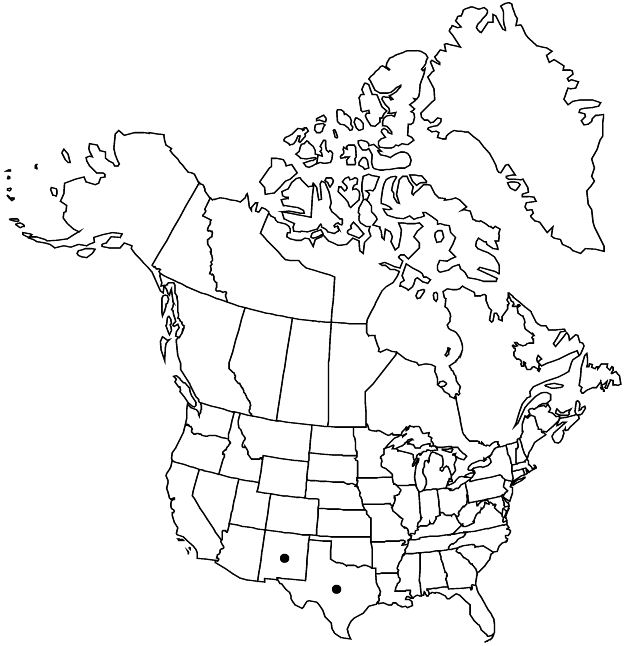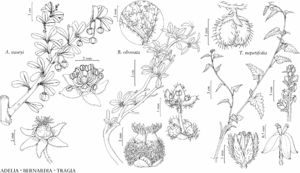Bernardia obovata
J. Arnold Arbor. 21: 261. 1940.
Shrubs to 0.8 m. Leaves: stipules caducous, green to straw colored, not thickened, without dark resinous exudate; petiole 0.5–3(–4) mm; blade usually obovate to cuneate, rarely broadly elliptic to suborbiculate, 0.6–3 × 0.5–2.5 cm, margins flat, crenate-serrate, laminar glands 1(–2), abaxial surface green, sparsely spreading stellate-pubescent, adaxial surface green, sparsely stellate-pubescent to glabrate; veins not prominent abaxially, ± level with surface. Inflorescences: staminate thyrses 5–10 mm. Staminate flowers: stamens 3–4(–6), nectary glands claviform. Pistillate flowers: pistil 2-carpellate; styles 2, irregularly dissected adaxially. Capsules 5 mm, 2-lobed.
Phenology: Flowering spring; fruiting summer–fall.
Habitat: Canyon washes in high desert scrub.
Elevation: 800–1900 m.
Distribution

N.Mex., Tex., Mexico (Chihuahua, Coahuila, Sonora).
Discussion
Bernardia obovata is a Chihuahuan Desert endemic occurring in the flora area only from the trans-Pecos of west Texas to the San Andres Mountains of southern New Mexico (K. W. Allred 2002b). The bicarpellate pistil is apparently unique within Bernardia.
Selected References
None.
